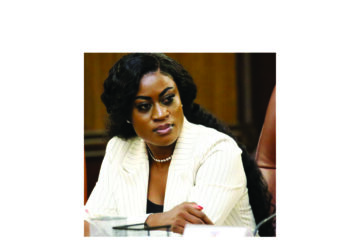Niël Terblanché
The Green Hydrogen Commissioner of the Namibia Green Hydrogen Programme, James Mnyupe, has assured that the Ministry of Environment, Forestry, and Tourism (MEFT) will oversee the development of a Strategic Environmental and Social Assessment (SESA) for the Southern Corridor Development Initiative (SCDI), which includes the TKNP.
This comes after the call for an independent and transparent Strategic Environmental Assessment (SEA) of the green hydrogen sector in Namibia by the Namibian Chamber of Environment (NCE).
This call was made on International Day for Biodiversity and directed at the Namibian and German governments as well as the European Union.
International Day for Biodiversity is observed annually on 22 May.
Mnyupe highlighted that the SESA will adopt a highly consultative approach, involving the public and private sectors, non-governmental organisations, and civil society organisations.
“The SESA aims to provide a comprehensive evaluation of alternatives and integrated perspectives on biodiversity, ecosystems, and the cumulative impacts of existing and potential developments in the area,” he said.
Mnyupe added that the SESA will guide the government in policymaking, land use planning, investment promotion, national infrastructure projects, and local economic development initiatives.
According to Mnyupe, the Environmental Investment Fund (EIF) will procure the SESA, and the Request for Proposals will be issued this week.
Mnyupe said it is premature to assess the specific impact of any project before the SESA and project-level Environmental and Social Impact Assessments (ESIAs) are conducted.
“These assessments will be reviewed by the Environmental Commissioner before development permission is granted, in accordance with the 2007 Environmental Management Act and relevant regulations,” he added.
Mnyupe pointed out that the TKNP already hosts or plans to host various projects, including tourism concessions, town expansion in Lüderitz, power generation projects, mining activities, and green hydrogen projects.
The NCE chief executive officer, Chris Brown, expressed concerns about the proposed green hydrogen developments in the Tsau //Khaeb (Sperrgebiet) National Park (TKNP), Namibia’s most biodiverse national park, which is within one of only 36 global biodiversity hotspots.
“The global importance of this national park is greater than all the national parks in Germany, which would be the main recipients of green hydrogen produced in the TKNP. The damage to integrity, biodiversity, landscape, sense of place, and future tourism will be immense, all in the interests of serving the relatively short-term energy needs of mainly Germany and some other parts of the EU,” he said.
He stressed that mitigating climate change should never come at the expense of biodiversity, as stated in their position paper.
Brown added that the chamber, which is also a member of the International Union for Conservation of Nature (IUCN), fully supports the IUCN position that initiatives to mitigate climate change should never come at the expense of biodiversity.
He urged the German public to voice their opposition to the destruction of Namibia’s national park for energy production.
“We don’t believe that the people of Germany would allow the destruction of any of their national parks for energy production, and we ask them to tell their government that it is morally wrong to offshore the environmental costs of their energy needs to Namibia,” said Brown.




